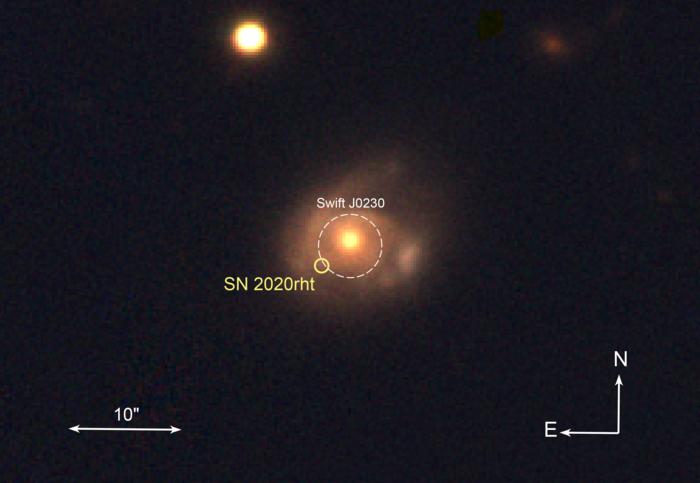Strange X-Ray Bursts Arise From Black Holes Eating Stars
Posted on Categories Discover Magazine

In recent years, scientists have puzzled over a particular class of transients – bursts of intense X-rays and light shot from distant galactic centers.
Now, astronomers have discovered a new X-ray transient and are offering an explanation for these outbursts. The new find – located at the center of a galaxy some 500 million light-years away – is early fruit for a new transient detection system that feeds off data produced by the Swift Observatory X-ray telescope.
What Are Transients?
Astronomers call them transients – bright flashes of energy in the sky that often mark the destruction of something very large, such as a planet.
These repeat on widely different time scales, from every few hours to once a year or so, but they are believed to be related. Astronomers have come up with some vivid names for them, including “Quasi-Periodic Eruptions” and “Periodic Nuclear Transients.”
They can last anywhere from seconds to years, and given their fleeting nature, they often escape observation.
Read More: Wandering Stars Pass Near Our Solar System Surprisingly Often
A Different Transient Pattern
The new transient discussed in the September 2023 Nature Astronomy study is unusual for its regularity, as it shines brightly for seven to 10 days and then disappears for a couple of weeks. This pattern aligns, scientists say, with a sun-sized star in close orbit around a supermassive black hole between 10,000 and 100,000 times the mass of the sun. While gigantic by earthly terms, this mass is relatively small for a black hole at the center of a galaxy.
The star swings close to the black hole on a regular basis and the black hole gobbles up part of it, equal to the mass of about three Earths. As the matter falls into the black hole, it heats to about 3.6 million degrees Fahrenheit and spews X-rays out into the universe.
“This is the first time we’ve seen a star like our Sun being repeatedly shredded and consumed by a low mass black hole,” said lead author Phil Evans, a lecturer in astrophysics at the University of Leicester, in a statement.
Read More: What Would Happen if You Fell Into a Black Hole?
“A New Way of Looking”
According to the statement, the other X-ray transients likely involve other deadly dances between black holes and stars, some of which have been completely destroyed. The researchers expect to find more as the transient detector continues its search.
“Swift is nearly 20 years old, and it’s suddenly finding brand new events that we never knew existed,” said Evans. “I think it shows that every single time you find a new way of looking at space, you learn something new and find there’s something out there you didn’t know about before.”
Read More: Astronomers Found a Baffling Black Hole That Existed 13 Billion Years Ago